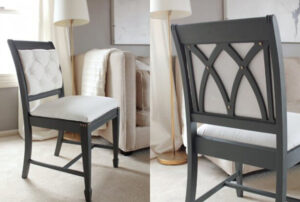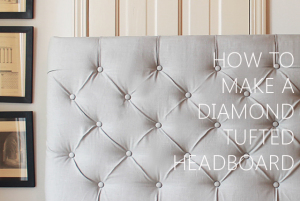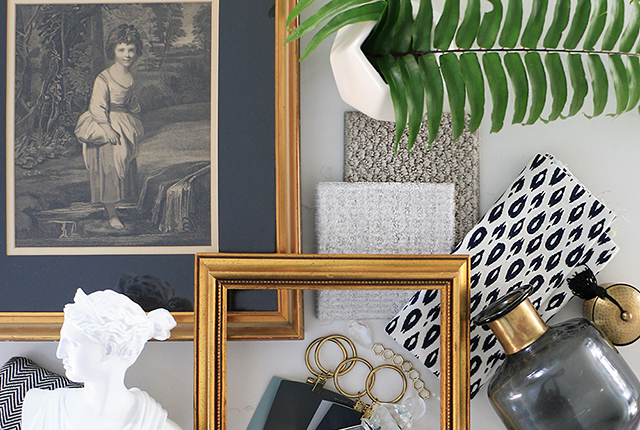Before you run out and buy all new pieces of furniture, consider giving older pieces a glow-up and refinish wood furniture that has stood the test of time!
These 9 important steps will help you transform any piece and give it a beautiful new look.
Sponsored by our friends at Minwax®

These days a lot of new furniture isn’t made with solid wood. So when you find quality wood furniture at a good price, it’s worth snatching it up! Whether you are thrifting pieces, or giving a little love to family heirlooms, you can give it your own flair while restoring it.
To get more of a French Country look on this outdated coffee table, I used Minwax® Wood Finish® Water-Based Semi-Transparent Color Stain in Simply White to tone down the yellowish wood. Then layered on Special Walnut, used the Weathered Gray Color Wash Transparent Layering Color, and ended with the Polycrylic protective finish.
Before diving into your own project, read through these important steps and helpful tips to get you started!
1. Set Up A Controlled Workstation + Safety Measures
Where you work matters. Plan for a location that will maintain a temperature perfect for drying stain that will also help control the humidity. Preferably above 65 degrees.
Make sure the area is well ventilated, and select methods to deal with dust from sanding.

Not everyone will have a workshop with an air filtration system like mine, but there are lots of other ways to help keep the dust down and protect yourself from particles.
- Attach a shop vac to the end of your power sander
- If you have windows, place a fan blowing out in one window, and a fan pulling clean air into another window
- Section off the sanding area with room divider screens, and/or protect other items in the room with drop cloths. This will make cleanup much easier.
- Use a good respirator that handles fine particles, and goggles to keep dust out of your eyes
2. Choose The Right Tools For The Job
Power sanders are fantastic, but they aren’t the only type of sanders you might need. For small nooks and crannies, something as simple as a flexible hand sander will get in the areas your power sander can’t reach.
Another consideration is whether you will need to use a paint and varnish stripper first. Test an area by sanding with a 120 grit to see if the varnish beads and is hard to remove, or if you can get down to bare wood easily.


Another tool that can be very helpful (especially for first timers) includes a wide staining pad for easy application. Don’t forget about disposable gloves, staining brushes, and plenty of lint-free rags.
3. Use Smart Sanding Techniques
Before you even start sanding, be sure to remove any hinges, pulls, and make things easier by disassembling pieces of the furniture (like removing legs). This will be helpful for a thorough sanding and staining process.
Sand with the grain, starting with a 120 grit sandpaper, then working to a 220 grit sandpaper.
If you don’t go over it with a finer grit sandpaper, you may end up with squiggly sanding circles that become more visible after stain has been applied.

4. Choosing Water Based Or Oil Based
There are water based and oil based options for stains, pre-stain conditioners, and even the protective finishes you use! Both water and oil based have their perks, but whatever you choose, it’s easiest to be consistent across your products for best results. If you choose not to, be sure to especially follow any instructions for drying time between coats.
Water Based Perks: I love how quickly the water based stains dry, and the fact that the odor is minimal. Plus you can choose from 200+ tintable colors!
Oil Based Perks: Oil based stains are my go-to for those pieces that will get lots of sun and some weather exposure. This is a great option any time extra added durability is needed.

5. Test The Stain On A Small Section
Your choice of stain may look slightly different depending on the type of wood it is coating. So test it out by sanding a section in a hidden underside of your furniture. It’s also a good way to practice your stain application!
6. Use Pre-Stain Wood Conditioner
Don’t neglect this step! Minwax® Pre-Stain Wood Conditioner will help the wood absorb the stain and prevent any blotchiness. It also helps control grain raising, which would cause a rough surface.
With all the work you’re putting into refinishing a piece of furniture, you want to ensure a smooth finish the first time.

7. Apply Your Favorite Stain
Most people don’t realize that Minwax stains are available in hundreds of finishes AND colors. You can choose from timeless wood stain hues, or go with a tintable color of your choice!
With semi-transparent or solid color stain options, you can have the color you love and choose how much grain shows through.

There are a variety of ways to apply stain. Use of a brush, or a stain pad to apply it, and a dry lint-free cloth to wipe off excess. Keep plenty of clothes handy… you’ll need several!
Work in small sections, going with the grain of the wood, and don’t allow the stain to dry without wiping the unabsorbed excess.
8. Add Character By Layering
Yes, you can use one amazing stain of choice, then seal it for a beautiful finish… But you can also add character in a variety of styles by using Minwax® Color Wash Transparent Layering Color.
Modern Farmhouse White Wash Style: Get this look by layering a lighter semi-transparent stain atop your wood-look base coat, or using the Whitewash color wash.
Vintage & Rustic Styles: For a slightly aged look full of character and depth, use the Barnwood Brown color wash.
French Country Style: This look is best created by using the Weathered Gray color wash on either bare wood or on a mid-light hued wood stain.

9. Finish With A Protective Coat
This is an important final step in refinishing your wood furniture. Give it a final protective coat to prevent wear and tear, and reduce the impact of potential scratches!
There are several amazing ways to protect your work of art but here are two of my favorites:
- Polyurethane: Minwax® Fast-Drying Polyurethane in an oil based finish is incredibly durable.
- Finishing Wax: Minwax® Paste Finishing Wax is a favorite for antiques or any piece that doesn’t need a hard protective coat. It has a nice feel and rubbed luster to it. Plus you can get it in Natural or Special Dark tint that adds to the layered look of the piece.

I won’t pretend it doesn’t take time and effort to refinish wood furniture, but it is well worth it!
A quality piece of furniture will stand the test of time and wear, and your family will value it for years to come!
Like This? You’ll Love These!
See some great furniture builds like this chevron patterned bookcase build, or this outdoor sofa build.
Learn how to restore a campaign dresser and fix frequent issues that come with this aging vintage furniture.







Leave a Reply